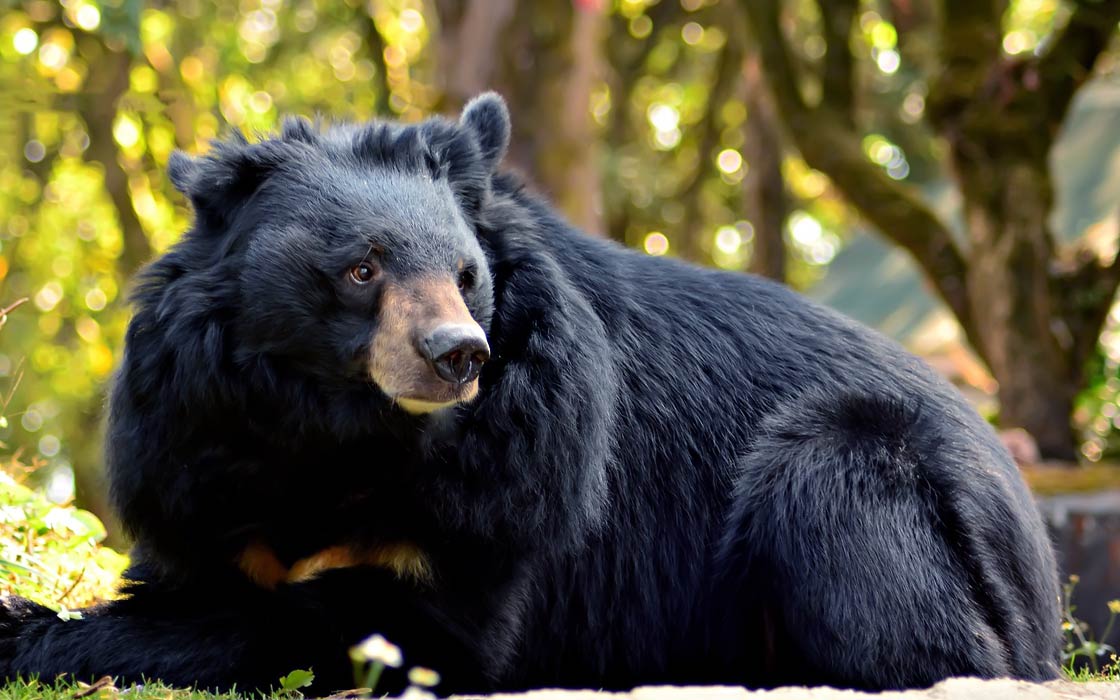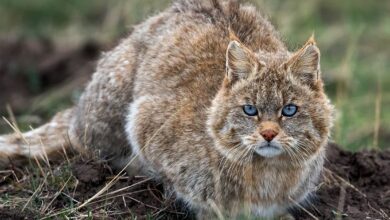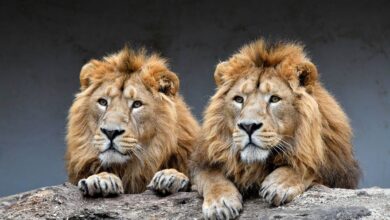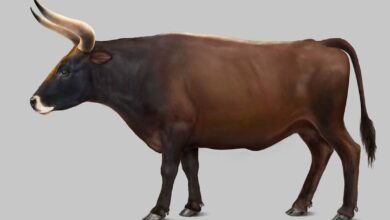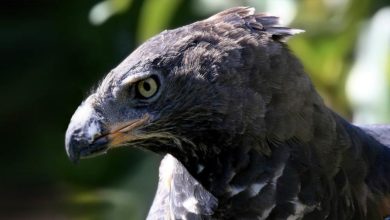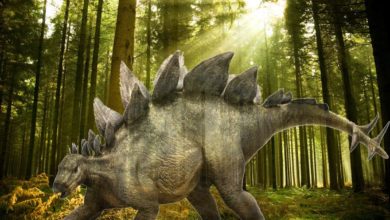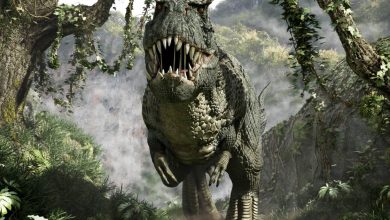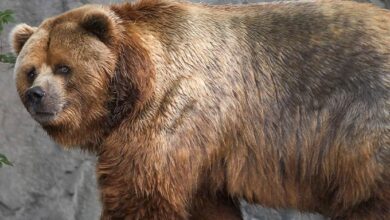Asiatic black bear, moon bear, white-chested bear (Ursus thibetanus)
The white V-shaped patch on the chest may bring to mind the Batman sign. However, we are not talking about a man, but about an arboreal bear living in Asia, whose build and coloration amuse, but also amaze. In contrast to the American black bear, which can often be colored in different shades of brown, the Asiatic black bear is mostly black; brownish specimens are very rare. A noticeable characteristic is a sickle-shaped, white fur color on the chest, which gave it the name moon bear.
Classification
- Kingdom: Animalia
- Phylum: Chordata
- Class: Mammalia
- Order: Carnivora
- Family: Ursidae
- Genus: Ursus
- Species: Ursus thibetanus
- Synonyms:
- Selenarctos thibetanus
- Ursus torquatus
There are 7 subspecies of the Asian black bear:
- Ursus thibetanus ussuricus – South Siberia, Northeast China and the Korean Peninsula
- Ursus mupinensis thibetanus – Himalayas, Indochina
- Ursus thibetanus formosanus – Taiwan
- Ursus thibetanus japonicus – Shikoku, Honshu. It is considered extinct in Kyushu
- Ursus thibetanus gedrosianus – southern Balochistan
- Ursus thibetanus laniger – Sikkim, Kashmir, Himalayas
- Ursus thibetanus thibetanus – Annam, Nepal, Burma, Thailand
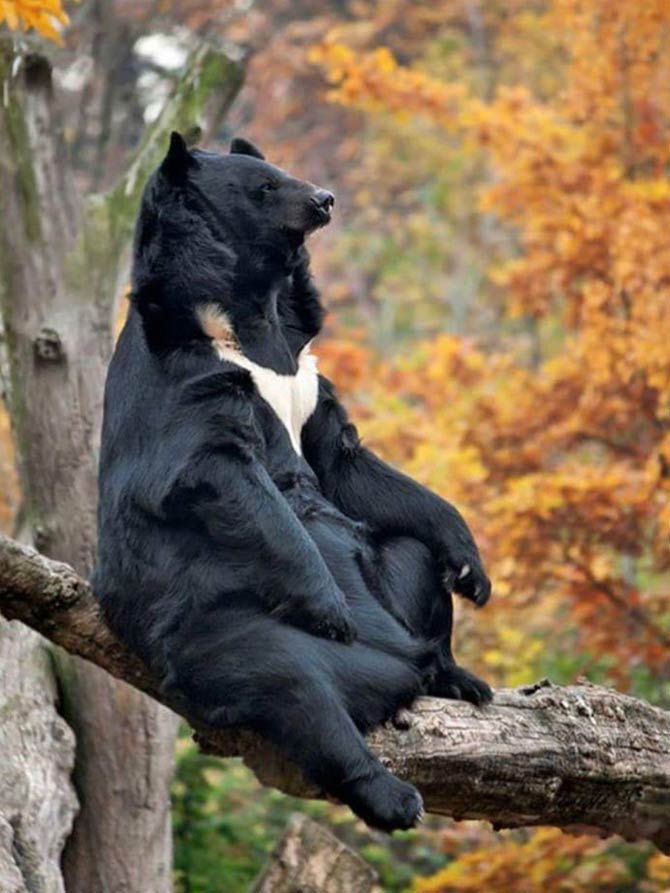
Occurrence
It is found in the Himalayan region, in the northern part of the Indian subcontinent, in Taiwan, Korea, Northeast China, in the Russian Far East, on the Japanese islands: Honshu and Shikoku. It usually lives in deciduous and mixed forests, deserts and places rich in thorny shrubs.
It rarely lives at altitudes above 3,700 m (12,000 ft) above sea level, usually it can be found at approx. 3,500 m (11,480 ft) above sea level in the summer in the Himalayas, while in winter, it prefers slightly lower areas – up to 1,500 m (4,920 ft) above sea level. In Japan, it can be found at altitudes equal to sea level.
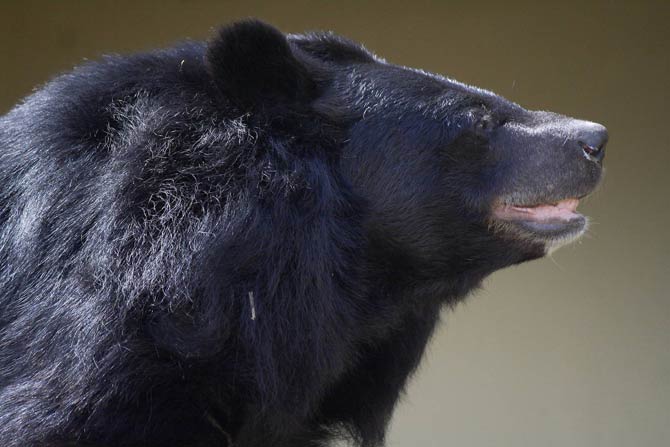
Characteristic
Appearance
It resembles a brown bear, but it is lighter and has slender limbs. The skull is rather small, but the lower jaw is very well developed. The front part of the body is strongly built, adapted to climbing trees, while the hind legs are relatively weaker and shorter than the hind legs of the American black bear (Ursus americanus), to which it is most closely related.
The Asian black bear walks upright more often than the rest of its cousins. Claws are designed for climbing and digging, they are noticeably longer and more curved than in the American black bear. Bell-shaped ears, proportionally longer than the ears of other bears, clearly positioned on the sides of the head. Very mobile nose and mouth.
The adult specimen is smaller than the American black bear, but large specimens can be larger than a few other bear species. Females are clearly smaller than males. The sense of smell is more acute than in other representatives of the Ursus genus, but the eyesight is not very good. A Tibetan bear can hear a sound with a frequency of 30 kHz.
The species is distinguished by coloration – the animal is black, and there is a V-shaped mark on the chest, often compared to a crescent (this is where the alternative name comes from – moon bear). Sometimes there are brown or even black and white specimens.
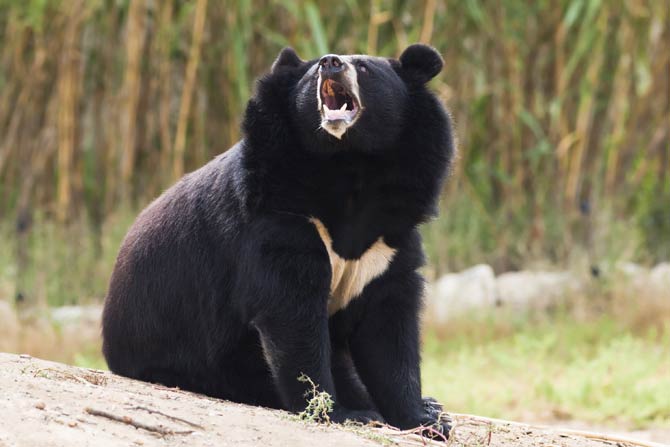
Diet and hunting
The moon bear is an omnivore. Compared to the brown bear (Ursus arctos), it is more herbivorous, but eats more meat than the American black bear. It is a nutritional opportunist – it eats what it can get the fastest. It eats pine nuts and acorns (April to May).
In times of food shortage, it makes its way to the river valleys to get to hazelnuts and larvae of insects living in rotting logs. In May and June, it supplements its diet with green vegetation and fruit. From July to September, it climbs trees in search of cones and grapes.
It rarely eats dead fish during the spawning season. It has been noticed that the Asian black bear quite often hunts ungulates, which it kills by breaking its neck,e.g. domestic buffalo, takin, wild boar, muntjac or serow. This leads to the conclusion that this Asian bear is probably the most carnivorous representative of the genus.

Lifestyle
It is active during the day, although individuals living near human settlements function rather at night. She lives in family groups consisting of two adults and young from the last two litters. They move positioned from the largest to the smallest. It perfectly climbs rocks and trees in search of food or a comfortable place to rest away from other animals.
Older specimens sometimes struggle to climb because their body weight is too heavy. It arranges twigs to be able to sit on them among the leaves of trees. A common sight are tree-like nests with Tibetan bears. These specific lairs are placed at a height of approx. 4 m (13 ft).
Most of the specimens move to lower areas during the winter periods. Bears prepare for deep winter sleep (hibernation) in mid-October. The “nap” will last from November to March. Bear’s lair is in a hollow tree trunk, or occupies a cave or a hole in the ground. It chooses caves at lower heights and on less steep slopes than the brown bear. Females wake up from hibernation later than males. The females and the young come out of the lair at the very end.
The moon bear does not need much space – its territory can range from 0.5 to just 2 km2 (0.2 – 0.8 mi²). The most important thing is food resources, not the size of the territory.
It emits many sounds: grunts, roars, groans, rales (when injured or angry), sometimes slurps while eating. It warns with a clear hiss, and it roars loudly during the fight. When it passes another bear, it draws its tongue over the palate, thus making a specific noise. During courtship, it cacle.
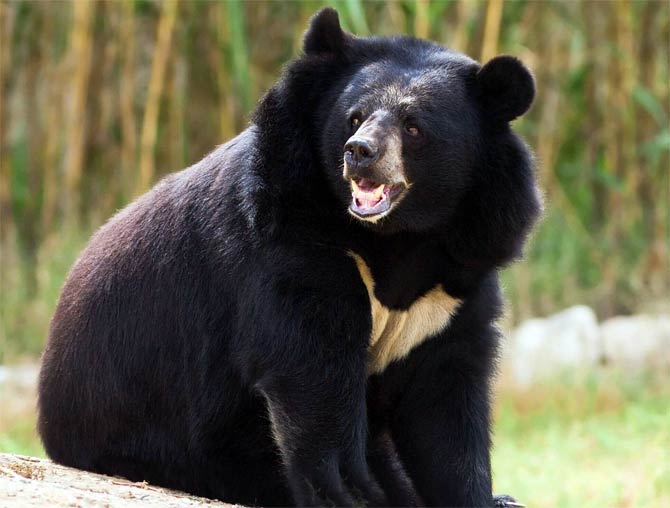
Reproduction
The mating season lasts from mid-June to mid-August, females give birth at the end of January. She gives birth to her first offspring at around 3 years of age. Like other species, the white-chested bear can delay the embryo from implanting in the uterus.
The young are born in caves or tree trunks. Pregnancy lasts 200 – 240 days, little bears weigh approx. 360 g, start walking after approx. 4 days, and after approx. 3 days they open their eyes. In one litter there are from 1 to 4 young, in most cases the female gives birth to two bears. They grow slowly, their weight will increase to only 2.5 kg (5.5 lb) by May. The offspring become independent from their mother after 24-36 months.
Natural enemies
The main threats are the tiger, the Amur leopard, wolf packs and dholes (Asian wild dogs). The potential killer of bear cubs is Eurasian lynx and snow leopard hunting for bears less than 2 years old.
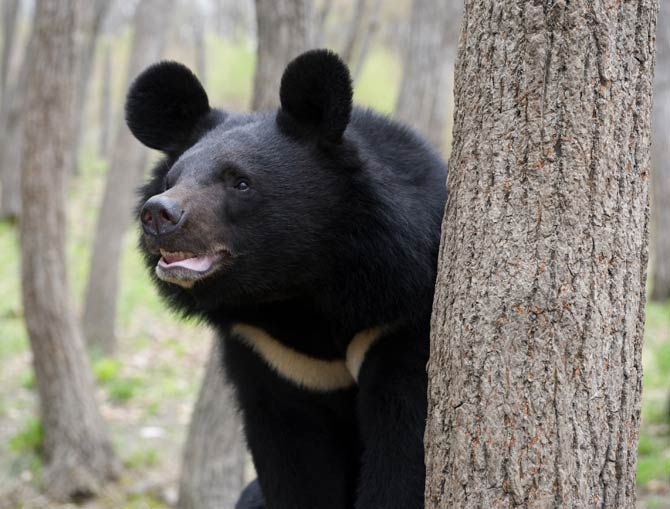
Detailed data / dimensions (size)
Asian black bear, Asiatic black bear, moon bear, white-chested bear (Ursus thibetanus)
- Length: 120 – 195 cm (3.9 – 6.4 ft)
- Height at the withers: 70 – 100 cm (2.3 – 3.3 ft)
- Tail length: 11 cm (4.3 in)
- Weight:
- males: weigh 60 – 200 kg (130 – 440 lb)
- average 135 kg (298 lb)
- females: 40 – 125 kg (88 – 276 lb)
- record female – up to 140 kg (310 lb)
- Lifespan:
- up to 25 years in the wild
- up to 44 years in captivity
- males: weigh 60 – 200 kg (130 – 440 lb)

Asian black bear – interesting facts
- A bear with broken hind legs is able to climb a tree.
- It can walk about 400 meters (1,312 ft) on two legs.
- It spends about 50% of its life on trees. The Asian black bear is one of the largest arboreal mammals.
- Pregnant females constitute about 14% of the population.
- The female gives birth every 2-3 years on average.
- Although it is largely herbivorous, it is considered to be very aggressive towards humans. It can attack without being provoked beforehand.
- The species is threatened with extinction due to intensive hunting and deforestation.
- The Asian black bear falls victim to poachers because of its beautiful, originally colored fur. The paws and gallbladder used in folk medicine are also valuable prey.
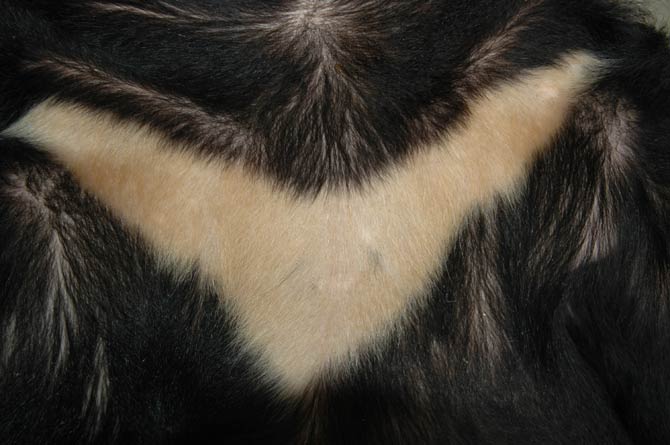
Asian black bear in the film frame
Below is a short video showing the Asian black bears (Ursus thibetanus)

